News
-
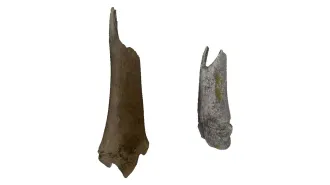 Anthropology
AnthropologySpanish horses joined Indigenous South Americans’ societies long before Europeans came to stay
By the early 1600s, hunter-gatherers at the continent’s southern tip adopted horses left behind by colonial newcomers, new finds suggest.
By Bruce Bower -
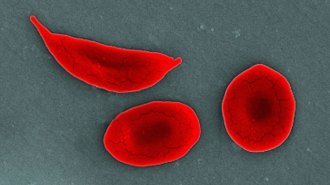 Health & Medicine
Health & MedicineThe first CRISPR therapy approved in the U.S. will treat sickle cell disease
In the world’s first CRISPR-based treatment, genetic tweaks to red blood cells aim to help people with the often debilitating disease.
-
 Neuroscience
NeuroscienceElectrical brain implants may help patients with severe brain injuries
After deep brain stimulation, five patients with severe brain injuries improved their scores on a test of cognitive function.
-
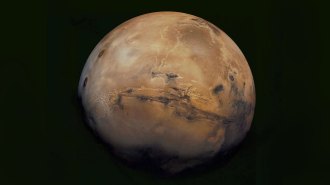 Planetary Science
Planetary ScienceGiant polygon rock patterns may be buried deep below Mars’ surface
A Chinese rover used radar to reveal long-buried terrain that might hint that Mars’ equator was once much colder and wetter.
By Elise Cutts -
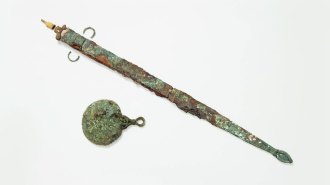 Archaeology
ArchaeologyA mysterious ancient grave with a sword and mirror belonged to a woman
The items hint that she fought in or helped plan raids and defensive actions in what’s now southwestern England about 2,000 years ago, scientists speculate.
By Bruce Bower -
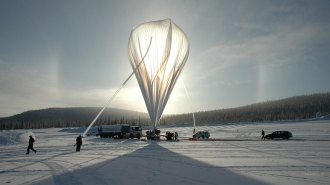 Climate
ClimateA new UN report lays out an ethical framework for climate engineering
The report’s release, which coincides with COP28, weighs the ethics of using technological interventions to mitigate climate change.
-
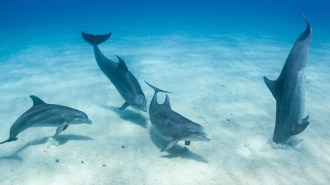 Animals
AnimalsFish beware: Bottlenosed dolphins may be able to pick up your heartbeat
Fish, sharks and platypuses are adept at sensing electrical signals living things give off. Bottlenosed dolphins make that list too, studies suggests.
-
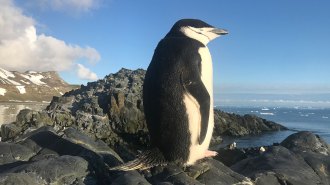 Animals
AnimalsThese nesting penguins nod off over 10,000 times a day, for seconds at a time
Micronaps net chinstrap penguins over 11 hours of sleep a day, offering some rest while staying vigilant against predators and competitors.
By Jake Buehler -
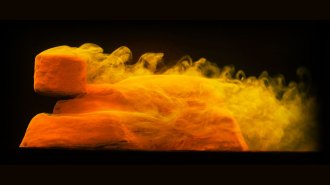 Earth
EarthBefore ancient Egyptians, nature sculpted sphinxes. Here’s how
Steady winds can carve landforms called yardangs — thought to have inspired the Great Sphinx of Gaza — from featureless blobs, a new study suggests.
By Elise Cutts -
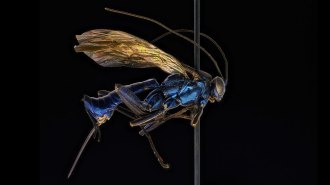 Animals
AnimalsOne mountain in Brazil is home to a surprising number of these parasitic wasps
Darwin wasps were thought to prefer temperate areas. But researchers scoured a mountain in the Brazilian tropics and found nearly a hundred species.
-
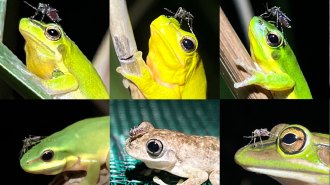 Life
LifeSome picky Australian mosquitoes may target frog nostrils for blood
The insects seem to sip from nowhere else on frogs’ bodies. Thinner skin or denser blood vessels near the nostrils might explain why.
By Jake Buehler -
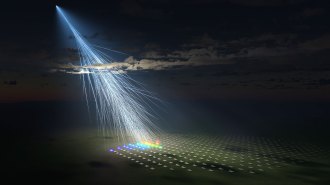 Astronomy
AstronomyA rare, extremely energetic cosmic ray has mysterious origins
In 1991, physicists spotted a cosmic ray with so much energy it warranted an ‘OMG.’ Now that energetic particle has a new companion.